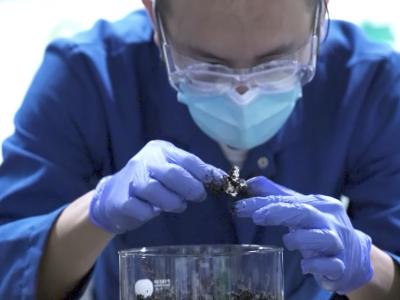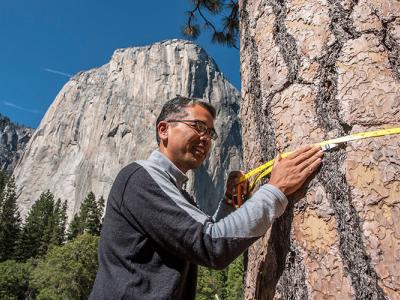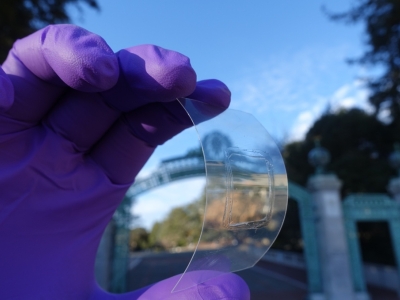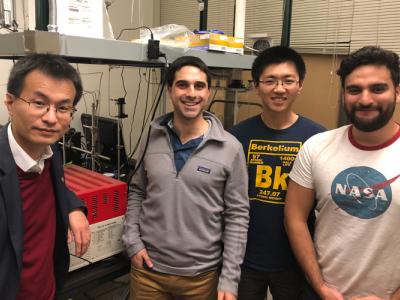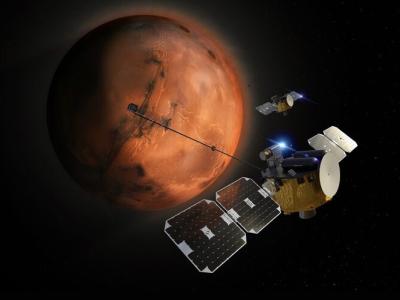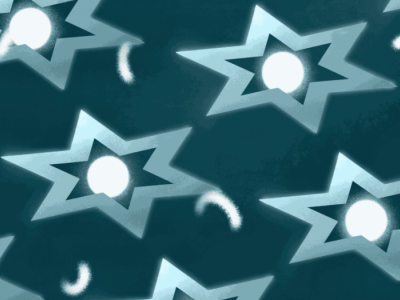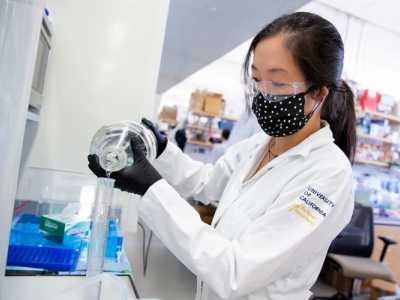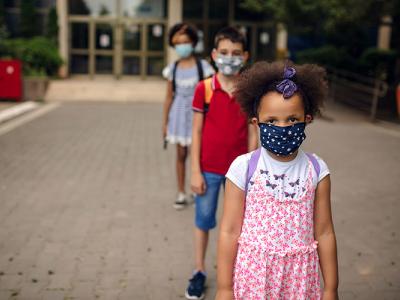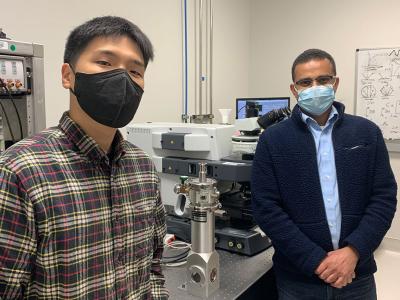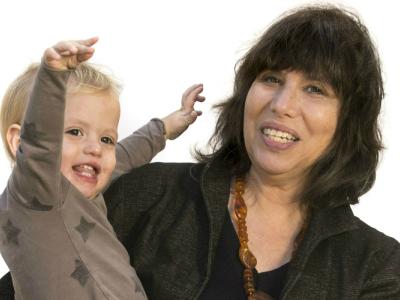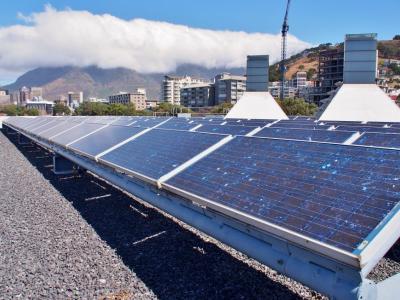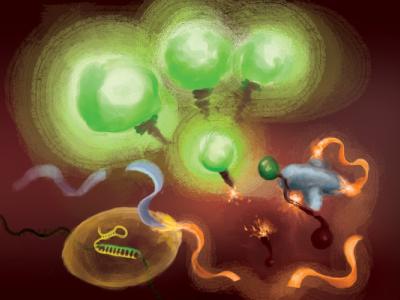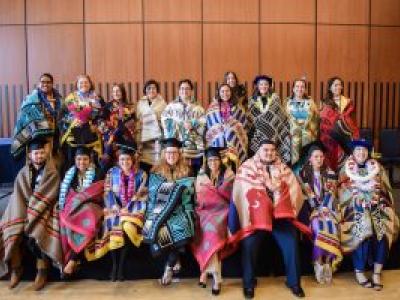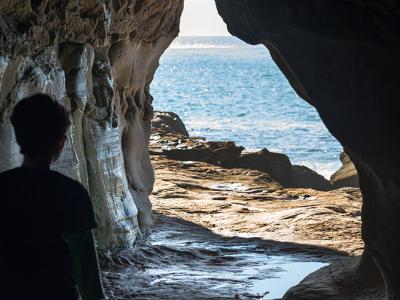UC Berkeley’s Ting Xu and her students have come up with one solution for the global problem of single-use plastics: embed enzymes in the plastic, so that once the bag or cup is no longer wanted, it will self-destruct with a little heat and water.
Research News
Learn more about UC Berkeley's researchers and innovators.
Showing 945 - 960 of 3459 Results
The White House Office of Science and Technology Policy (OSTP) has appointed University of California, Berkeley, scientist Patrick Gonzalez as assistant director for climate and biodiversity. The OSTP advises the president, vice president and the executive office on the science needed to develop and implement national policies.
Smartphones, laptops, and lighting applications rely on light-emitting diodes (LEDs) to shine bright. But the brighter these LED technologies shine, the more inefficient they become, releasing more energy as heat instead of light.
Now, as reported in the journal Science, a team led by researchers at Lawrence Berkeley National Laboratory (Berkeley Lab) and UC Berkeley has demonstrated an approach for achieving near 100% light-emission efficiency at all brightness levels.
The sugar-making process developed by Cestellos-Blanco and his UC Berkeley team, led by chemist and professor Peidong Yang, shared the top prize — $650,000 — with two other teams competing in the CO2 Conversion Challenge.
An interplanetary mission led by the University of California, Berkeley, to put two satellites — dubbed “Blue” and “Gold” — into orbit around Mars has been officially authorized to prepare for launch in October 2024.
Scientists have taken the clearest picture yet of electronic particles that make up a mysterious magnetic state called a quantum spin liquid (QSL). The achievement could facilitate the development of superfast quantum computers and energy-efficient superconductors.
Despite the ongoing pandemic, it has been a banner year for University of California, Berkeley, research. The campus’s budget for sponsored projects rose by 30% in the fiscal year ending June 30 — an increase of $240 million from the previous year. This was due primarily to a nearly 50% increase in funding from the federal government and robust growth in support from private foundations.
Millions of U.S. students are returning to K-12 classrooms, and after the profound disruptions caused by the COVID-19 pandemic, many of their parents, teachers and principals are worried about the learning lost while students attended classes remotely.
Stress and strain, applied in just the right manner, can sometimes produce amazing results. That is what researchers discovered about an emerging semiconductor material — black phosphorous (BP) — used to make two types of optoelectronic devices: light emitting diodes (LEDs) and photodetectors.
Psychologist Alison Gopnik, a world-renowned expert in child development and author of several popular books including The Scientist in the Crib, The Philosophical Baby, and The Gardener and the Carpenter, has won the 2021 Carl Sagan Prize for Science Popularization.
Scott Stephens is the senior author of a new study that gathers together decades of research documenting how the return of wildfire has shaped the ecology of Yosemite National Park’s Illilouette Creek Basin and Sequoia and Kings Canyon National Parks’ Sugarloaf Creek Basin since the parks adopted policies for the basins to allow lightning-ignited fires to burn.
To meet the development needs of a growing population, Africa’s electricity sector requires a major transformation. New research, co-authored at the UC Berkeley Goldman School of Public Policy, identifies five sets of complementary actions to put Africa’s electricity sector on track to sharply increase electrification rates and secure long-term access to affordable and cleaner energy.
Videos of squirrels leaping from bendy branches across impossibly large gaps, parkouring off walls, scrambling to recover from tricky landings are not just more YouTube content documenting the antics of squirrels. Researchers at UC Berkeley are capturing video of squirrels as part of their research to understand the split-second decisions squirrels make to elude deadly predators, research that could help with development of robots with better agility and control.
Frequent, rapid testing for COVID-19 is critical to controlling the spread of outbreaks, especially as new, more transmissible variants emerge. A research team at the UC, Berkeley is aiming to develop a diagnostic test that is much faster and easier to deploy than the gold standard qRT-PCR diagnostic test. The team has now combined two different types of CRISPR enzymes to create an assay that can detect small amounts of viral RNA in less than an hour.
The UC Berkeley Blum Center for Developing Economies announced today that a wide range of academic programing around food, energy, and water systems (FEWS) designed by and for Native Americans and other underrepresented student groups will expand substantially as a result of a new $10 million National Science Foundation (NSF) grant to the University of California, Berkeley and the University of Arizona, in collaboration with the American Indian Higher Education Consortium and more than 20 additional partners.
For U.S. workers and students who have toiled remotely in isolation or in pods for the past year and a half, reentering offices, classrooms and other old stomping grounds, starting this fall, is likely to range from exhilarating to downright nerve-wracking.

